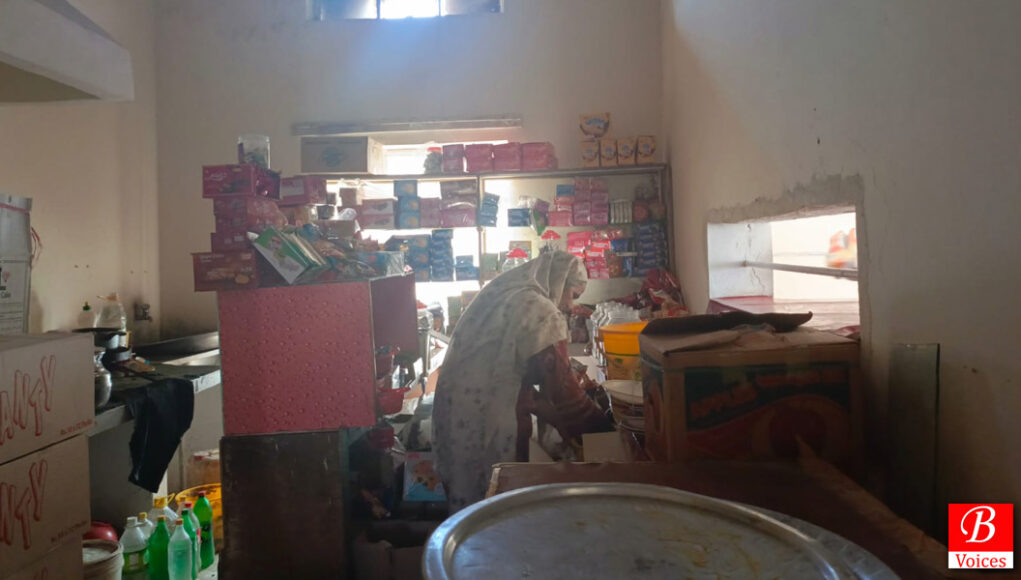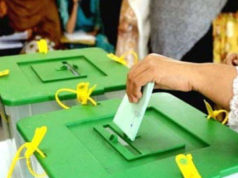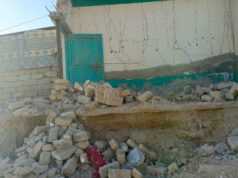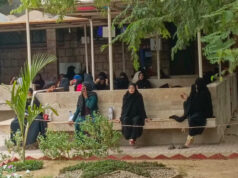Tahira Khan
Amna Bibi*, 65, runs a small shop in the Loralai district. Owing to the current inflation rates, she is worried about how to buy flour to feed her family.
“I run a small shop to earn 25,000 which helps me to buy medication and other food items. Being a diabetic patient, I cannot take rest and have to earn to support myself and my family.”
When asked about the son, she said; “He also runs a shop in the nearby market on Tehsil Road. He sells samosa and fruit chat. It is not his fault that his mother is also doing a small job. The fault lies with the exacerbating inflation where the salaried class and labor class are both facing the same difficult time.’’
The ordeal of Amna Bibi is not new in Balochistan. As per the Pakistan Social and Living Standard Measurement (PSLM) 2019-20 survey, the economic conditions of twenty percent of the households in Balochistan are much worse while twenty-two percent lie in the worst category. In the context of the economic condition of the whole of the communities in the province, the same survey put approximately forty percent, with 17 percent much worse and 21 percent in worse conditions, of the households below the poverty line. Accordingly, the PSLM-2016 survey indicates that 71.2 percent of people in Balochistan face multidimensional poverty where the average intensity constitutes 55.3 percent.
Owing to these vulnerable economic conditions, the scale of food insecurity and malnutrition is also rising. A report titled “Pakistan, Balochistan: IPC Acute Food Insecurity Analysis- December 2022’’ issued that 1.29 million are in a critical situation and are in dire need to receive relief at the emergency level. The report analyzed the economic conditions of twelve districts including Loralai, Gwadar, Harnai, Zhob, Kech, Kharan, Chagai, Pishin, Killa Abdullah, Panjgur, Washuk, and Nushki.
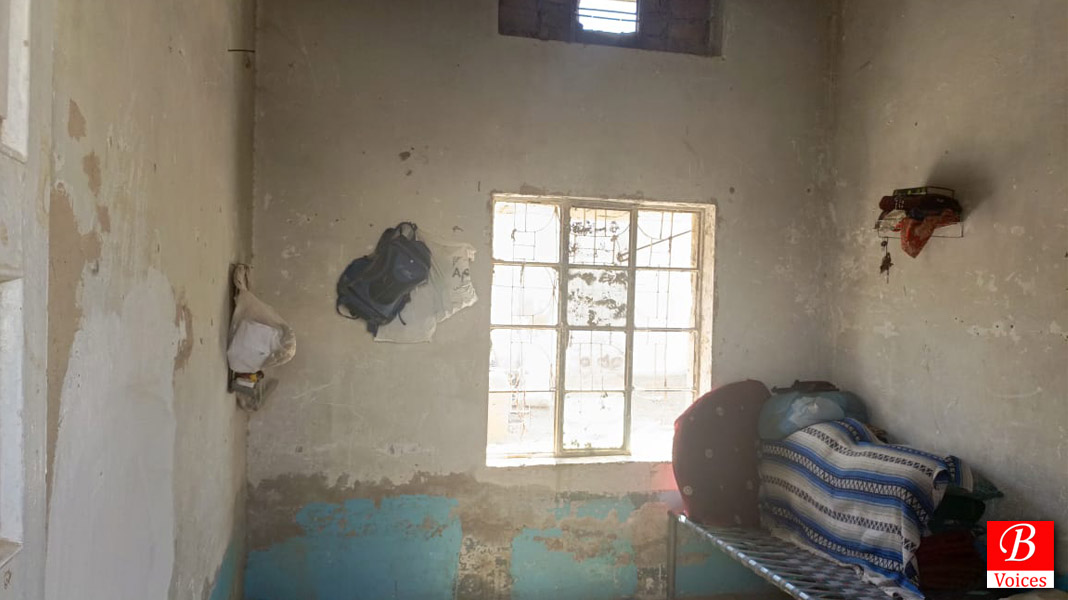
Following that, the report also underlined that the researched districts received multiple shocks in the form of inflation and a rise in commodity prices due to the worsening economic conditions of the country. Furthermore, it is also indicated that food insecurity will deteriorate due to climate change and lessened livelihood opportunities.
In the context of the multi-dimensional poverty index (MPI), Loralai ranks as the seventh poorest district in the province among the districts analyzed by the Balochistan Rural Development and Community Empowerment Program (BRDCEP). Similarly, MPI includes fifteen indicators covering living conditions along with education and health. However, the SDPI and PPAF survey mentions Loralai as the sixth poorest district in the context of twenty-seven indicators including education, living standards, health, and ownership rights.
The results of findings are as under;
Planning Commission, UNDP, OPHI, 2016 |
Multi-dimensional Poverty Index (MPI) |
Incidence of Poverty (%) |
Intensity of Poverty (%) |
Category of Incidence of Poverty |
2014-15 |
0.320 |
68.5 |
46.7 |
60-69 % |
PPAF & SDPI, 2016 |
MP Population Share |
MP Headcount Ratio |
||
2012-13 |
0.14 |
67.3 |
||
Source: https://www.rspn.org/wp-content/uploads/2018/04/District-Profile-Loralai.pdf
One of the officials of BRSP also commented on the rising number of poor households in Loralai on the condition of anonymity. According to him, Loralai is the fourth poorest district in the province where almost sixty percent of households lie in the (0-23) poverty band and forty percent belong to the (24-100) poverty band. It is pertinent to mention that poverty bands are part of poverty scorecards (PSC) where 0 depicts extreme poverty and 100 shows the lowest poverty level of households. Accordingly, BRSP has developed six different bands of poverty including extremely, chronically, transitory, transitory vulnerable, transitory non-poor, and non-poor.
In 2022, the World Bank released a report titled “Pakistan Development Update: Inflation and the Poor” depicting that average inflation headline increased by over 12 percent, an 11-year high record. It also remained second highest in the South Asian region which affected the prices of food as well. Similarly, food prices increased up to 13.4 percent because of high agricultural input costs, global food prices, and weak exchange rates that further influenced the domestic prices of consumer items.
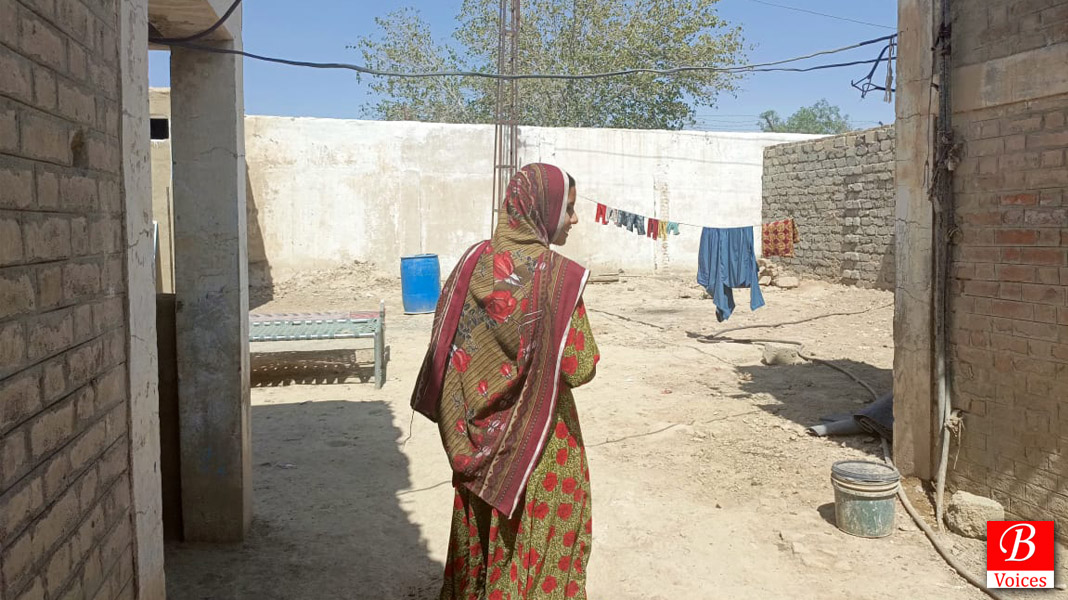
Following that, Muhammad Mohsin, HR Generalist, commented on the matter. According to him, inflation badly hit the rural areas as core inflation reached 9.0 percent in 2022 as compared to 7.6 percent last year. However, in August 2022, the inflation hike reached 27.3 percent due to increased prices of fuel, electricity charges, and floods. Therefore, the economic hardships of the people are increasing with each passing day. Lastly, he also said that economic hardship has also led to low school enrollment because people cannot pay the fees of their children.
Moving forward, the tale of another working person, Sumia Bibi*, is also worth quoting. She works in one of the educational institutes of Loralai as a chef. According to her, she works 9-5 but she is not receiving even the minimum wages. She also lamented that she has a daughter to get married and other children to get an education.
In the same vein, Wajia Noor, Ph.D. Scholar, lamented the fact that women’s participation in the labor force is dropping owing to the current inflation level. It started during the pandemic days and has not returned to the pre-pandemic period. She also mentioned how she has visited different areas of Loralai in the context of social work to gauge the poverty levels. In this regard, she mentioned the Baloch colony, the Asgharloon area, where people are residing at the extreme poverty level.
In such spirit, Sadia Jabbar, the government servant and resident of Loralai, mentioned that it is not just Asghar Loon where one can witness extreme poverty level I.e., 31.1 percent. She mentioned other areas such as Lakhi 1 and Bawar areas of the district where 72.5 and 61.7 percent of people reside in the (0-23) Poverty band level respectively.
One of the bus drivers of a school, Muhammad Kaleem*, who receives wages of around 35000 per month has also felt the burden of rising inflation in the province. On a question, of how he survives he said;
“See, I earn 35,000 but that is not enough for a family of six people. Every month I encounter a deficit of approximately 8 thousand and used to take loans from friends. You may calculate better, the gas we use in our homes is now 300 while the flour costs me 7000. As far as the rent is concerned, it is above 10,000. Owing to these constraints, I can afford one meal for my children and do labor-ridden jobs to pay back loans.”
Adnan Aamir, a political economy analyst based in Islamabad, also explained the gravity of poverty in Balochistan. He stated; “According to the UNDP survey, 2016, every 3 out of 4 residents live below the poverty line in the province which depicts the gloomy picture of the incidence of poverty. Consequently, the current inflation has exacerbated the already improvised segment of society. Secondly, there are less than necessary job opportunities and the only job is the government job.”
He further commented; “Even if we look into the government job, salaries have minimal increments per annum. If we compare the increments and inflation rates, there would be a huge difference, regrettably. For example, at the start of this year, inflation reached 40 % whereas the increment was not upgraded in the like manner. Överall, inflation has impacted the net income. Now, the amount of labor and salaried classes used to spend per month is enough for twenty days only as per my calculations. To cover this deficit, people either have to take loans or lower their standard of living or take extra work.”
In the context of social safety nets, his response provided a dismal state of affairs; “It is equally unfortunate that the state is not providing any social safety networks. The only available network is the Benazir Income Support Programme. Even BISP is providing a minimal amount i.e., 6-7 thousand per family that is not enough to cover the overall expanses of any family. All these factors if put together explain that a minimal increase of inflation can disturb the living conditions of the province, let alone a 40 percent increase.”
Similarly, one of the recipients of BISP from Bawar Killi mentioned her socio-economic ordeal and said the given amount is not enough to feed her family of seven members. In this regard, Muhammad Mohsin said;
“Given the socio-economic conditions and political instability, the program is not able to deliver what it promised. In the harsh economic conditions, it has been relatively ineffective. If I talk about the current inflation rate, the CPI is expected to reach 247 points by the end of the quarter while considering the tremendous amount of utility bills in terms of electricity, fuel, and natural gas an amount of Rs. 7,000 per family is not sufficient to provide the financial stability to a family or even cover the basic needs.”
One of the economists, a Gold Medal award winner from Buitems in Economics and holds a certification in Comparative Public Policy and Leadership from the University of Massachusett, Amherst, also shed light on the matter on the condition of anonymity. According to him, BISP and interim reliefs in Pakistan have shown some good results. These efforts have focused on the poor households that assisted them in the short-term reduction of income disparity. However, the most promising way is to introduce broad welfare programs.
In addition to that, the program has inadequate coverage that does not include all the beneficiaries along with insufficient distribution among the deserving population. Consequently, the allocative inefficiencies disrupt the overall efficiency of such relief packages and people distrust these initiatives as well.
He further noticed that short-term relief may not alter the underlying structural problems of poverty as it is discouraging people from gaining economic independence. Thereupon, policymakers face impediments as they navigate the intricate web of social welfare, economic development, and productivity because there does not exist a balance between offering assistance to the needy and promoting self-reliance.
The writer holds an M.Phil Degree in South Asian Studies from the University of Punjab. She can be reached on Twitter @TahiraGhilzai.
Click here to read previous articles of the writer.
Share your comments!


